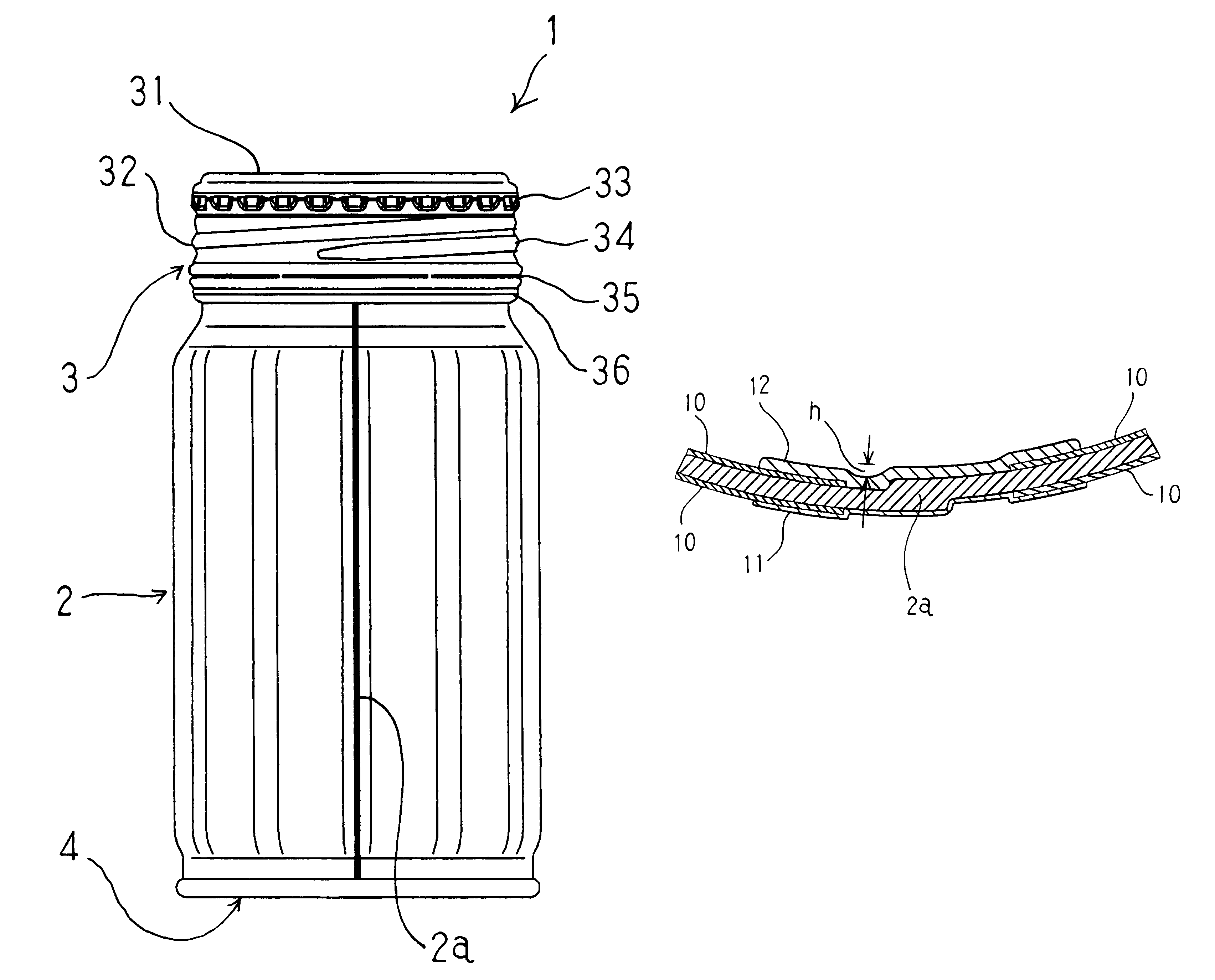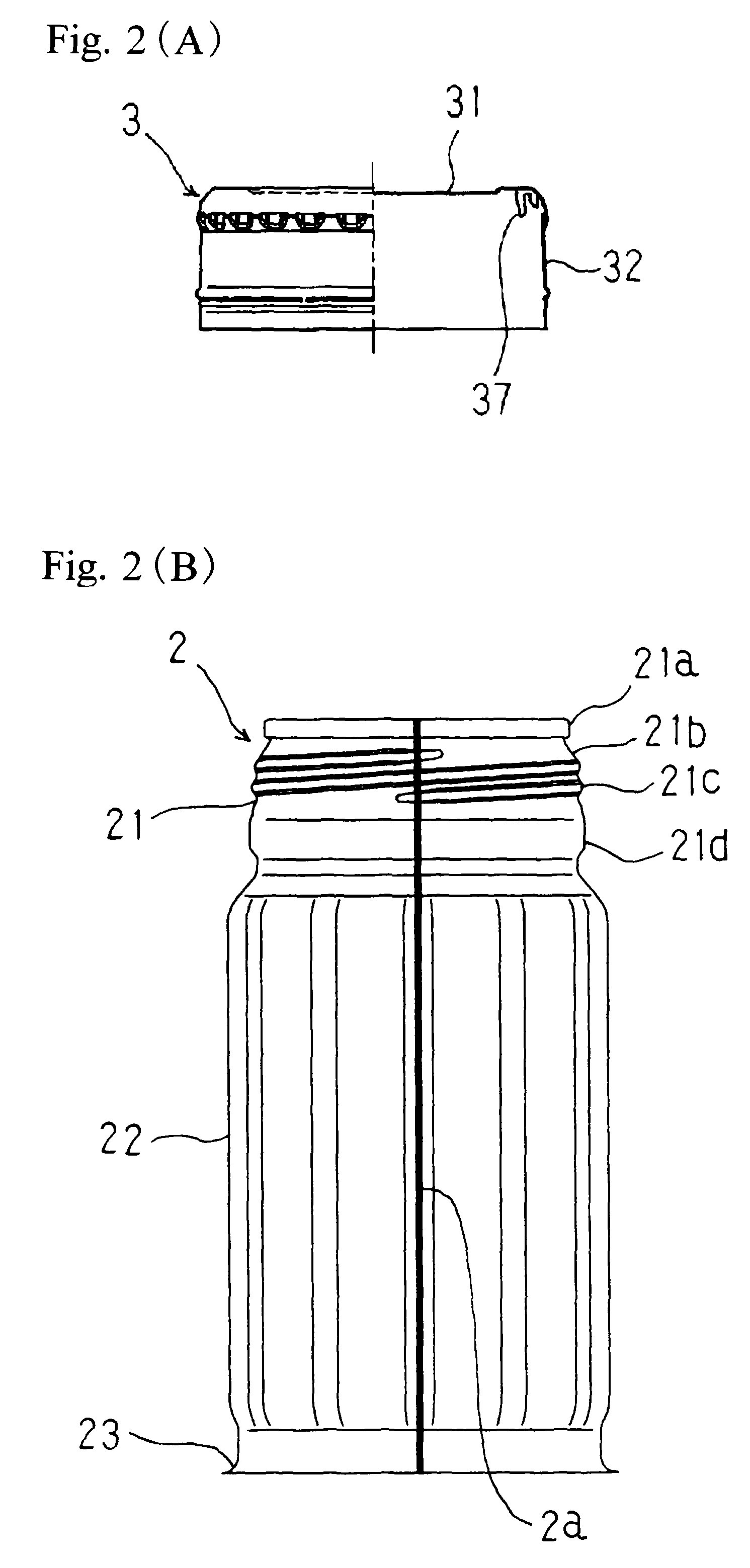Can container
a can and container technology, applied in the field of can containers, can solve the problems of level difference inevitably formed at the welded portion, difficulty in completely eliminating the level difference resulting from welding the overlapped metal sheet, and level difference inevitably, so as to achieve sufficient sealing ability and facilitate the opening of the closur
- Summary
- Abstract
- Description
- Claims
- Application Information
AI Technical Summary
Benefits of technology
Problems solved by technology
Method used
Image
Examples
Embodiment Construction
[0020]Here will be explained a preferable embodiment of the can container according to the invention shown in FIG. 1. FIG. 1 shows a wide-open type resealable can. A can body 2 of a can container 1 is a welded can body formed integrally by rolling a metal sheet into cylinder and welding overlapped longitudinal edges of the sheet. A container mouth 21 to which a metal closure 3 is applied by an engagement of thread is formed on one of the end portions of the welded can body. On the other hand, a bottom lid 4 is attached to other end of the welded can body by a double-seaming method. FIG. 2 (B) shows a can body 2 before the bottom lid 4 is seamed thereto. At this stage, the container mouth 21 has been formed on one of the end portions of the welded can body comprising a welded portion 2a, and a flange portion 23 to which the bottom lid 4 is to be seamed has been formed on the other end of can trunk. Here, an intermediate portion between the container mouth 21 and the flange portion 23...
PUM
 Login to View More
Login to View More Abstract
Description
Claims
Application Information
 Login to View More
Login to View More - R&D
- Intellectual Property
- Life Sciences
- Materials
- Tech Scout
- Unparalleled Data Quality
- Higher Quality Content
- 60% Fewer Hallucinations
Browse by: Latest US Patents, China's latest patents, Technical Efficacy Thesaurus, Application Domain, Technology Topic, Popular Technical Reports.
© 2025 PatSnap. All rights reserved.Legal|Privacy policy|Modern Slavery Act Transparency Statement|Sitemap|About US| Contact US: help@patsnap.com



